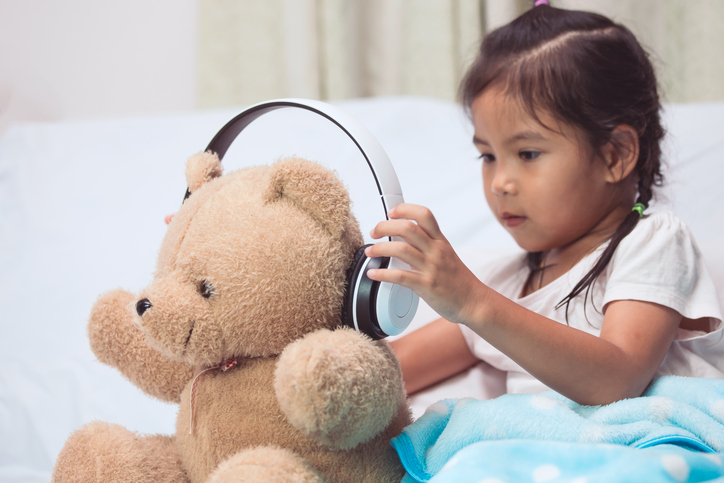 When the subject of emotional abuse comes up, a common question is, “Why don’t people experiencing abuse seek help?” This question has many answers.
When the subject of emotional abuse comes up, a common question is, “Why don’t people experiencing abuse seek help?” This question has many answers.
A person who emotionally abuses others may isolate their victims from friends, family, and health care providers. Without support, a victim can become dependent on the abuser for affection and safety. In some cases, an individual is under surveillance and cannot communicate openly.
The person experiencing abuse may fear what will happen if they tell the truth. Abuse often escalates when a victim tries to leave. The person may not know how to leave safely.
Some people in an abusive relationship are convinced their situation is hopeless. They may feel no one will believe their story, especially if they are from a marginalized community. Others may wish to avoid the stigma that may come with talking about abuse.
Reaching out for help can take a lot of bravery. But help is available. For many people, meeting with a therapist or counselor is the first step toward positive change.
- Individual Therapies for Emotional Abuse
- Therapy for Emotionally Abused Children
- Collective Therapies for Emotional Abuse
- Self-Care and Emotional Abuse
- Therapy for Abusers
- Case Examples of Emotional Abuse
Individual Therapies for Emotional Abuse
If a person wants to speak alone with a mental health provider, they might seek individual therapy. Some therapists have specialized training in the fields of domestic violence and abuse recovery. They can help people regain self-esteem and autonomy. In cases of gaslighting—when one person tries to make another doubt their perception of reality—a therapist can restore a person’s faith in their own memories and emotions. If necessary, an individual and their therapist may form an escape plan to leave the relationship safely.
Even after the person leaves an abusive relationship, they may still have trauma from the abuse. There are many types of therapy that can help one recover. For example, Eye Movement Desensitization and Reprocessing (EMDR) can unlock memories blocked in one's mind so healing can begin. Some people use journal therapy to cope with the effects of abuse. Somatic experiencing can also help people process their feelings; it focuses on physical sensations rather than thoughts and memories. After your first therapy appointment, your counselor will create a custom treatment plan for you.
Therapy for Emotionally Abused Children
Therapy can help children who experience emotional abuse rebuild self-esteem and autonomy. A therapist can show a child what a healthy adult-child relationship looks like. Ideally, a child will learn that they are not to blame for the abuse.
 Traumatized children are often reluctant to share details of their abuse. Young children may not have the vocabularies to fully describe what they endured. Such children may respond best to treatments that include creative play, such as art therapy, sand tray therapy, or trauma relief therapy.
Traumatized children are often reluctant to share details of their abuse. Young children may not have the vocabularies to fully describe what they endured. Such children may respond best to treatments that include creative play, such as art therapy, sand tray therapy, or trauma relief therapy.
Bullying is also a form of emotional abuse that can impact young people in particular. Schools and communities have services in place to address the issue of bullying. These services are often under-utilized, partially due to stigma. Victims of bullying, or those who suspect bullying, can contact school administrators or social services to report the abuse and get support.
Collective Therapies for Emotional Abuse
Group therapy is a common type of treatment for survivors of emotional abuse. It involves sharing memories and feelings with those who have had similar experiences. If someone knows others have endured similar situations, they may feel less shame and isolation. Open communication can create a safe and positive environment for survivors to rebuild self-esteem and confidence.
In cases of intimate partner violence, couples counseling is not recommended. If the person who perpetrated the abuse is not prepared to change, then joint therapy may bring on more abuse.. Therapy only works when an abuser admits they have a problem and is willing to work on it. An abuser will typically be unsuccessful in therapy until they are able to take this step.
If both partners are demonstrating abusive behavior, but they are both willing to change, therapy may be helpful. A therapist can help each person understand their roles, responsibilities, and rights within a relationship. If one partner is not cooperative, a therapist can work with the other to explore potential options. A therapist and an individual may develop a plan to leave an abusive relationship if necessary.
Self-Care and Emotional Abuse
Recovering from the trauma of abuse can be a difficult and lengthy journey. Therapy can be beneficial throughout the healing process. Lifestyle changes can also have a significant impact.
 Emotional abuse often causes mental and physical health concerns. Self-care can be a powerful tool in stress management and recovery. Exercise, a healthy diet, and good sleeping habits can improve your mood and physical health. You may also cope by creating a daily routine that includes healthy hobbies and leisure activity.
Emotional abuse often causes mental and physical health concerns. Self-care can be a powerful tool in stress management and recovery. Exercise, a healthy diet, and good sleeping habits can improve your mood and physical health. You may also cope by creating a daily routine that includes healthy hobbies and leisure activity.
If an abuser limited one's social life, rekindling old bonds can help one regain feelings of stability. Family and friends can offer much-needed emotional support. Having relationships based on mutual respect can help someone feel secure again.
Therapy for Abusers
In therapy, people who abuse others can learn to replace abusive behaviors with healthy ones. A therapist may teach the person how to:
- Develop emotional intelligence
- Manage their anger in safe ways
- Set boundaries
- Have respectful disagreements
- Share power and control in a relationship
If the offender was abused themselves as a child, the therapist can help them understand how their past traumas can manifest in their present behaviors. A counselor can help the abuser address mental health concerns that rose from trauma, such as depression or substance abuse. But even if therapy unearths explanations for abusive behavior, most therapists will continue to emphasize self-awareness and accountability.
Unlearning abuse can be a lifelong process. It often requires changing long-held attitudes and behaviors. For an abuser to make progress, they need to avoid excuses, blaming, and self-pity. They must accept the consequences of their actions and make amends if possible. If a person who has abused others is committed to improving themselves, change is possible. Meeting with a trained therapist can help you overcome abusive habits.
Case Examples of Emotional Abuse
- Therapy for a verbally abusive and threatening relationship: Priya, 24, enters therapy due to stress and a low mood regarding her relationship with her live-in boyfriend. She reports they fight often, but she expresses confusion over who is at fault. She wants her boyfriend to come for a joint session. He agrees to attend a session if the therapist recommends it, but only with the understanding that it is Priya’s therapy, because she is "the one with the problems," as he puts it. Priya asks the therapist to recommend a couples session. Before doing so, the therapist asks a few questions about their fights. The therapist learns that Priya’s boyfriend has been calling her demeaning names, telling her he can kick her out of their apartment at any time, and disappearing for days without telling her where he goes. The therapist identifies these behaviors as emotional abuse and informs Priya that couples therapy is not appropriate for their situation. The therapist instead recommends Priva continue in individual therapy, where she can work on improving her self-esteem and asserting her needs in the relationship. Priva and the therapist make a plan for leaving if the abuse continues.
- Creating ground rules in a mutually critical relationship: Giles, 42, and his wife, Juliet, 40, come in together for marriage counseling. They immediately begin blaming each other for the troubles in their relationship. Both partners insult each other, and neither gives any ground. The therapist establishes rules for their sessions and teaches them new communication techniques.. After several weeks, Giles and Juliet both begin to express a deep fear of abandonment. The therapist helps each of them to uncover instances of abuse in their pasts. This process brings them closer together and helps them begin working through their disagreements without abusive language.
- Emotionally abusive behavior between friends: Emilia, 12, is referred to the school counselor. Her teacher noticed she seems disengaged in the classroom and has trouble getting along with other students. The counselor asks Emilia how she likes her classroom and if everything is going well. Emilia tells the counselor that her best friend since first grade, Marie, no longer wants to be friends with her. Many of the other students do not seem to like her either. Marie has told Emilia she is "too ugly and uncool" to be her best friend. Marie is often verbally unkind to her, insulting her clothing and hairstyles in front of other classmates. She has also hidden Emilia’s belongings in the past. The counselor speaks to Emilia's teacher, who sets aside a day to devote to lessons on friendships and bullying. The counselor also speaks to Marie in a separate session. The counselor sees Emilia twice more. Emilia reports in the last session that her classroom relationships have improved and that Marie has been somewhat nicer. The counselor encourages Emilia to return with any further issues.
References:
- Bernstein, D. P., PhD. (2002). Cognitive therapy of personality disorders in patients with histories of emotional abuse or neglect. Psychiatric Annals, 32(10), 618-628. Retrieved from http://search.proquest.com/docview/217052371?accountid=1229
- Help for abusive partners. (n.d.) The National Domestic Violence Hotline. Retrieved from http://www.thehotline.org/help/for-abusive-partners
- Long-term consequences of child abuse and neglect. (2013). Child Welfare Information Gateway. Retrieved from https://www.childwelfare.gov/pubPDFs/long_term_consequences.pdf
- Smullens, Sarakay, M.S.W., B.C.D. (2010). The codification and treatment of emotional abuse in structured group therapy. International Journal of Group Psychotherapy, 60(1), 111-30. Retrieved from http://search.proquest.com/docview/194787519?accountid=1229

